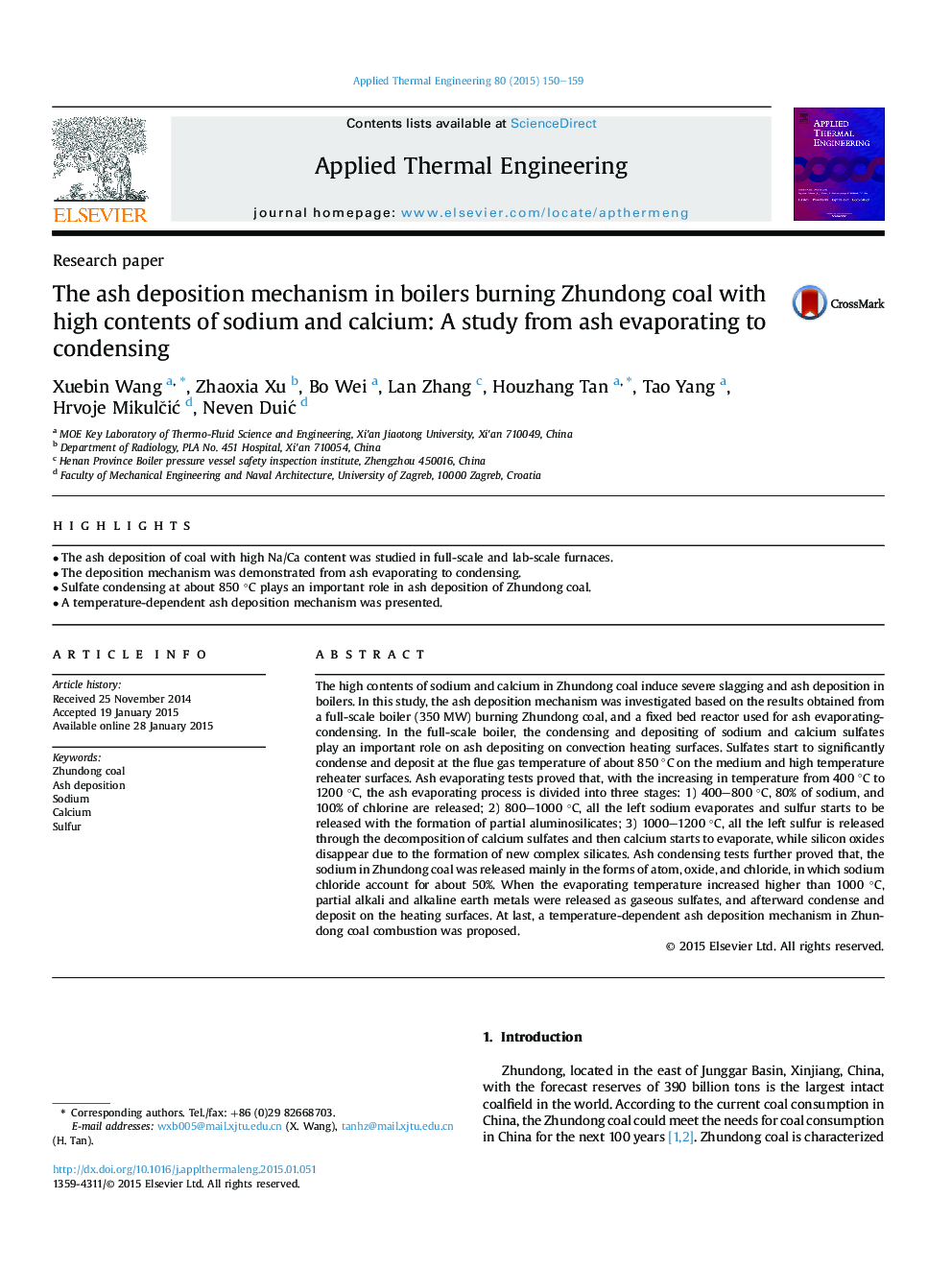| کد مقاله | کد نشریه | سال انتشار | مقاله انگلیسی | نسخه تمام متن |
|---|---|---|---|---|
| 645673 | 1457148 | 2015 | 10 صفحه PDF | دانلود رایگان |

• The ash deposition of coal with high Na/Ca content was studied in full-scale and lab-scale furnaces.
• The deposition mechanism was demonstrated from ash evaporating to condensing.
• Sulfate condensing at about 850 °C plays an important role in ash deposition of Zhundong coal.
• A temperature-dependent ash deposition mechanism was presented.
The high contents of sodium and calcium in Zhundong coal induce severe slagging and ash deposition in boilers. In this study, the ash deposition mechanism was investigated based on the results obtained from a full-scale boiler (350 MW) burning Zhundong coal, and a fixed bed reactor used for ash evaporating-condensing. In the full-scale boiler, the condensing and depositing of sodium and calcium sulfates play an important role on ash depositing on convection heating surfaces. Sulfates start to significantly condense and deposit at the flue gas temperature of about 850 °C on the medium and high temperature reheater surfaces. Ash evaporating tests proved that, with the increasing in temperature from 400 °C to 1200 °C, the ash evaporating process is divided into three stages: 1) 400–800 °C, 80% of sodium, and 100% of chlorine are released; 2) 800–1000 °C, all the left sodium evaporates and sulfur starts to be released with the formation of partial aluminosilicates; 3) 1000–1200 °C, all the left sulfur is released through the decomposition of calcium sulfates and then calcium starts to evaporate, while silicon oxides disappear due to the formation of new complex silicates. Ash condensing tests further proved that, the sodium in Zhundong coal was released mainly in the forms of atom, oxide, and chloride, in which sodium chloride account for about 50%. When the evaporating temperature increased higher than 1000 °C, partial alkali and alkaline earth metals were released as gaseous sulfates, and afterward condense and deposit on the heating surfaces. At last, a temperature-dependent ash deposition mechanism in Zhundong coal combustion was proposed.
Journal: Applied Thermal Engineering - Volume 80, 5 April 2015, Pages 150–159